F-class, a shooting discipline, is about accuracy and precision on long range. The goal is to shoot a tight group of 15–20 shots as close to the center of the target as possible. Even though shooting skills play a crucial role in F-class, you cannot outperform others without proper equipment. The F-class riflescope plays an important role. If you are wondering which one to purchase, you have come to the right place – we have created this ULTIMATE F-class riflescope buying guide to help you hit the center of the target at extreme distances.

If you have any additional questions regarding riflescopes for F-class or any optical device from the field of sport optics, send an e-mail to [email protected]. As a team of passionate sports optics enthusiasts, we are always glad to help.
1. F-class and similar shooting styles described
1.1 F-class shooting
F-class, a long-range shooting competition, is named after its founder, Canadian George Farquharson who made a tremendous impact on target shooting. In the mid to late 1990s, he reached an agreement with the Dominion of Canada Rifle Association to allow the use of bipods and scopes in addition to slings and iron sights in competitions.
In F-class, the competitors shoot at targets 300–1000 m away in the prone position. The goal is to shoot tight groupings of 15–20 shots as close to the center as possible. There are two types of F-class shooting – Open and Target. The rules in both categories vary based on the location. Here, we are going to describe the ones that apply to the European territory.
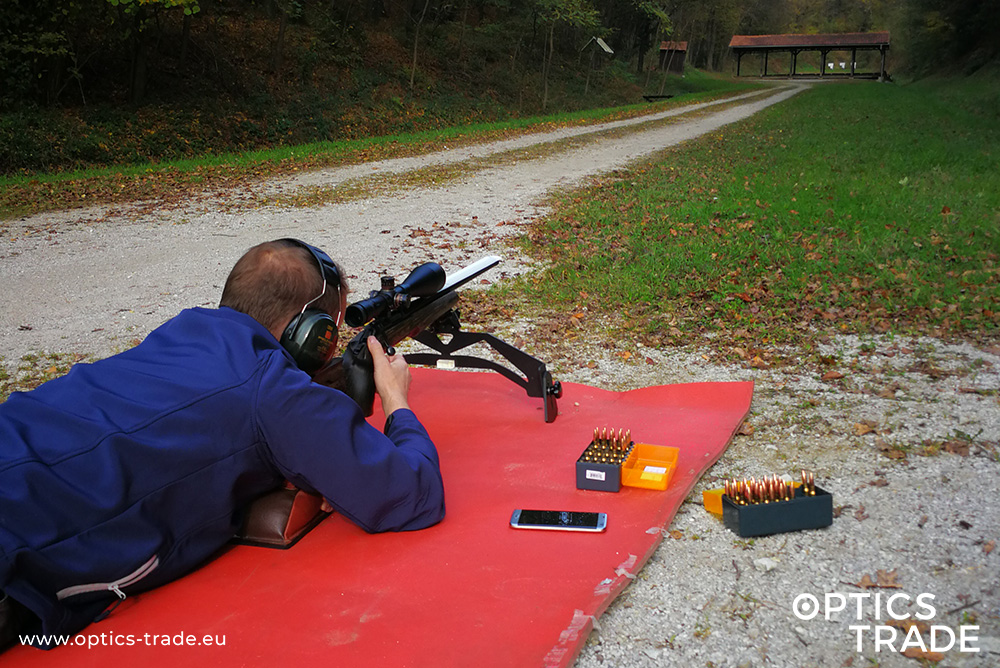
The Open category allows the use of calibers up to .35. The rifles can weigh no more than 10 kilograms, and the use of a rest is permitted. In the Target category, shooters may use rifles chambered in the standard military calibers, such as .223 Rem., 5.56x45mm NATO, .308 Win., 7.62x51mm NATO, 8×57 IS and 7.62×54 R. The use of a rest is forbidden, but you can shoot using a bipod. The weight of the rifle along with all the accessories must not exceed 8.25 kg. The acronym FTR is often used when referring to the Target category; it stands for F-class Target Rifle. In none of these categories can a competitor use a muzzle brake.
Looking for riflescopes suitable for F-class?
1.2 Benchrest shooting
In benchrest competitions, shooters shoot from a rest while seated. The rifles are put in the front and rear rest, placed on a table or a bench, hence the name benchrest. The targets are very small, requiring extreme accuracy and precision from the shooter.
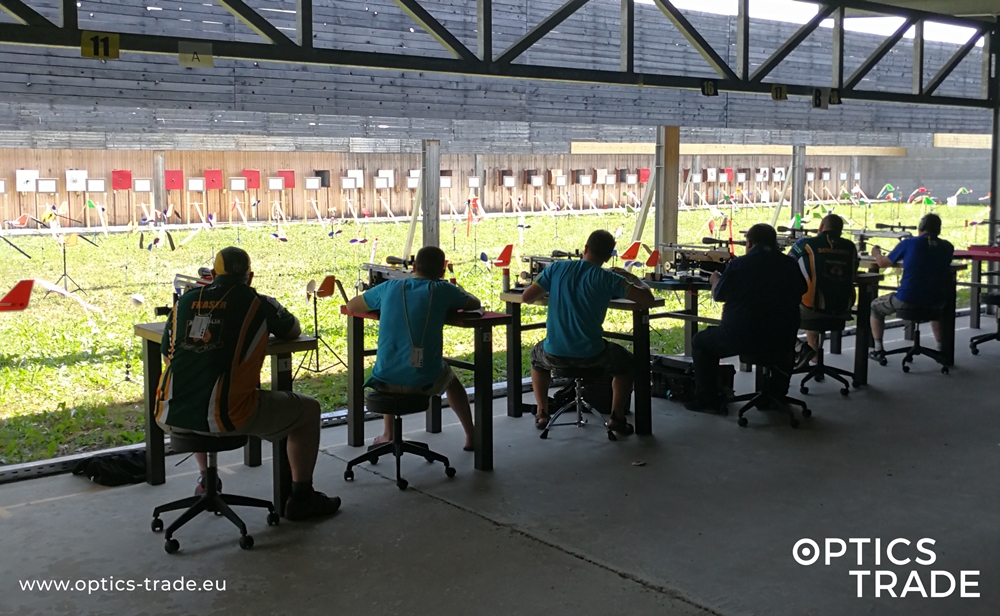
There are two main types of benchrest, full-bore and benchrest 50 (BR50). In the full-bore category, competitors shoot with heavy rifles and riflescopes. Benchrest 50 competitors use small-caliber rifles, chambered in .22 LR, and lightweight riflescopes – they must be careful not to surpass the weight limit.
Looking for riflescopes suitable for benchrest?
1.3 Precision shooting on known distances
There are many variations of F-class shooting around the world, some of them with stricter rules than the others.
Standard F-class shooting is shot at 1000 yards and consists of two test shots and 13–15 competitive shots, depending on whether the shooter wants the test shots to count or not (15 shots are considered for the final score.)
Some less strict versions of F-class allow an infinite number of test shots. In these competitions, 20 shots are considered for the final score, and the distance at which it is shot at varies – it can be 300, 600, 700, 900 yards or at any other distance specified by the organizer.
Furthermore, in certain competitions that deviate from the original F-class rules, the shooter is allowed to use a target camera. Even though these competitions should not be referred to as F-class competitions, the organizers and competitors often use this term regardless.

2. Accuracy vs Precision
In shooting, the terms accuracy and precision cannot be used interchangeably. Read on to find out the differences between the two.
2.1 Accuracy
Accuracy describes whether the fired shots hit the target or not. If they are within the intended point of aim, we can say that the shooter was accurate.
2.2 Precision
Precision is measured based on the fired shots’ proximity to one another. In other words, tighter shot groupings mean better precision.
If the shot grouping is tight and outside of the target, the shooter was precise and inaccurate. When the shots are within the target but scattered, the shooter was accurate and imprecise. We refer to the shooter as inaccurate and imprecise if the shots are scattered all over, outside of the target and far away from one another. When the shots are tightly grouped in the center of the target, the shooter is considered precise and accurate.
In F-class competitions, it is important to be precise and accurate.

3. What do you need for F-class shooting?
The equipment that shooters need depends on the category in which they compete.
3.1 Equipment in the OPEN category
- Any rifle with a caliber of up to 8mm,
- a riflescope suited for this category,
- a bipod or a front rest,
- one or two sandbags to support the butt of the rifle.
In the Open category, the weight of the rifle must not exceed 10 kilograms.
3.2 Equipment in the Target (F-TR) category
- A rifle chambered in .223 Rem., 5.56x45mm NATO, .308 Win., 7.62x51mm NATO, 8×57 IS or 7.62×54 R,
- a riflescope suited for this category (light F-class riflescope),
- a bipod or a sling,
- a rear bag without the capability of returning the rifle to its precise point of aim for the next shot.
In the Target (F-TR) category, the rifle along with all the attachments (scope, sights, bipod, etc.) may not exceed 8.25 kilograms.
In none of the categories may competitors use a muzzle brake.

4. Common features of F-class rifle scopes
4.1 Magnification range
For an F-class shooter, having a riflescope with a big maximum magnification is crucial. The upper end of the scope power should be above 30x. The magnification range of some F-class riflescopes extends all the way to 80x magnification.

4.2 Lens diameter
The lens diameter of F-class riflescopes is between 42 mm and 60 mm. Shooters mostly use those with 52 mm, 56 mm, and 60 mm lenses. 52 mm objective lens riflescopes are popular in the Target category since they are lighter.
4.3 Parallax adjustment
Having a parallax adjustment is of great importance with F-class riflescopes as they are mostly operated at high magnifications. All the riflescopes designed for F-class feature a parallax adjustment mechanism.

4.4 Reticle properties
What is an F-class reticle? It is of the second focal plane type. The first focal plane configuration would result in too much coverage of the target at high magnifications. The shooting is done during the day, so the reticle is usually non-illuminated. In F-class shooting, scope reticles used are incredibly thin so that they do not cover much of the target. They are either in the shape of a fine cross or have hash marks.

4.5 Turret properties
Both target (capped) and tactical (uncapped) turrets are popular in F-class shooting. The elevation range of light F-class riflescopes is limited because of the narrow central tube (30 mm), whereas the ones used in the Open category typically feature a 34mm tube and therefore (usually) provide a bigger elevation range. It is important to have fine clicks and excellent tracking ability. The click value of 1/8 MOA is the most common. Most F-class riflescopes feature a zero stop.

5. Evaluation criteria
When deciding to purchase an F-class riflescope, you should pay attention to the characteristics listed below.
5.1 Resolution
During an F-class competition, the shooters operate the riflescope at high magnifications. A great resolution of the image allows the shooter to properly see the targets and bullet holes at any distance.
5.2 Edge-to-edge sharpness
Great edge-to-edge sharpness reduces the need to constantly readjust the magnification ring. When an object at a certain distance is in focus, the image should be sharp all over the field of view.
5.3 Field of view
Field of view is not among the most important features in F-class shooting. Still, a bigger field of view allows for faster target acquisition, especially at greater distances.
5.4 Parallax adjustment
The parallax error is more evident at higher magnifications. F-class shooters shoot at targets far away – they constantly operate their riflescopes at high magnifications, so having a parallax adjustment mechanism is necessary. Having a huge travel range is highly beneficial as it allows you to focus the image perfectly at any given distance.
5.5 Click value
For an accurate shot at a target far away, the shooter must properly zero the rifle at a given distance. For this reason, F-class riflescopes feature a fine turret click value, most commonly 1/8 MOA.
5.6 Turrets
The turrets are high-profile, capped or uncapped. Uncapped turrets of the tactical type are the most common since they allow the user to manipulate the elevation and windage adjustments instantaneously. Often, they are equipped with a turn indicator, mechanical or non-mechanical.
5.7 Tracking
Tracking refers to the accuracy of the elevation and windage mechanism in a riflescope. The movement of a turret with 1/8 MOA clicks on a riflescope with a great tracking mechanism accurately moves the point of impact at a given distance. F-class shooting is about accuracy and precision, which is why having a riflescope with a good tracking mechanism is of great importance.
5.8 Elevation
The elevation range in F-class riflescopes is limited because they mostly feature 30mm tubes. One can expect somewhere between 50 MOA and 100 MOA of internal travel with F-class riflescopes. For riflescopes that have around 50 MOA of internal elevation, buying a canted base (20 MOA) is recommended to be able to shoot at targets up to 1000 m away.
5.9 Reticle selection
To have the smallest coverage possible, F-class shooters opt for thin second focal plane reticles. The most popular choice is a thin, SFP crosshair reticle.
6. Can I use a tactical rifle scope for an F-class competition?
Some shooters tend to use a tactical MOA/MOA or MIL/MIL riflescope for an F-class competition, but we do not recommend this. Tactical riflescopes are not designed for shooting at small targets at long distances – they have big click values on their turrets, thick FFP reticles, and a maximum magnification too low for F-class shooting purposes. F-class riflescopes are designed to do tight shot groupings at known distances.
7. Price classes
7.1 Below 1000 €
Our picks
Vector Optics Minotaur 12-60×60 Gen II

Vector Optics Minotaur 12-60×60 Gen II is an incredibly affordable riflescope for what it offers. At 650 €, it is difficult to find a riflescope with similar features and this degree of quality. It convinces with its maximum magnification of 60x, which is above average for the price point it is available at.
There are two reticles at disposal, both in the second focal plane. The VETD-LR is a great choice for F-class; it consists of two thin lines and a dot in the center, providing minimal coverage of the target. The combination of a 60mm objective lens and 34mm central tube contributes to it being relatively heavy. For this reason, it is not the best choice for the Target F-class category.
The optics are decent for the price, even at the highest magnifications. The clicks are 1/8 MOA. The elevation turret has a Zero Stop function, while there is a locking function on the windage one. The scope has a rather small elevation adjustment range of 40 MOA. The parallax can be set from 10 meters to infinity. It comes with a sunshade and Picatinny rings. A great choice for those who are new to F-class shooting.
| PROS | CONS |
|---|---|
| Incredibly affordable | Short travel range of the parallax |
| Great magnification range at this price point | 40 MOA (11.6 MIL) of internal elevation |
| Optical quality (compared to more expensive riflescopes) |
Vector Optics Minotaur 12-60×60 Gen II
Available on our website. Worldwide shipping.Incredibly affordable riflescope for what it offers
Athlon Argos BTR G2 10-40×56 SFP Gen II

Argos BTR G2 10-40×56 SFP is a real bargain, therefore it deserves a place in our best buys list. It features a thin BLR MOA reticle in the second focal plane that provides minimal coverage of the target. The magnification span is a little bit narrower than with Minotaur, but the maximum magnification of 40x is good enough for F-class shooting. This is also the magnification at which the subtensions are valid.
It features high-profile open tactical turrets with a click value of 1/8 MOA. The quality of glass is good for the money, even though the image gets dimmer as you get closer to the maximum magnification. It weighs 860 grams, which is considered light in the F-class scopes category. The elevation turret is equipped with a zero-stop feature. The parallax can be set from 15 m to infinity. A great beginner long-range scope for someone who does not want to stretch their wallet.
| PROS | CONS |
|---|---|
| Affordable | The image gets dimmer as you get to higher magnifications |
| Optical quality (compared to more expensive riflescopes) |
Athlon Argos BTR G2 10-40×56 SFP Gen II
Available on our website. Worldwide shipping.A great beginner long-range scope
7.2 1000-2000 €
Our picks
Sightron SIII Target 10-50×60 LR

Sightron is the only scope producer with a strong focus on producing F-class riflescopes. They dominate the mid-range F-class market with SIII series, known for their great cost-performance ratio. There are many riflescopes in Sightron’s SIII series, but none of them are as suitable for F-class as the Target 10-50×60 LR model with 1/8 MOA clicks and a fine crosshair reticle. The turrets are high-profile and capped. This model has 50 MOA of internal elevation, so we suggest buying a 20 MOA base if you wish to shoot up to 1000 m. SIII Target 10-50×60 boasts great tracking capability and optical quality.
Because Sightron understands the demands of a modern F-class shooter, their riflescopes are incredibly popular among F-class shooters, both novice and experienced. Some shooters complain over the stiffness of the parallax adjustment knob. If you are not ready to purchase an expensive F-class scope, SIII 10-50×60 is a logical choice. For a large scope with a 60mm objective lens diameter, it is incredibly light – it weighs a mere 850 grams. This makes it a perfect choice for the F-TR category.
| PROS | CONS |
|---|---|
| Great optical quality for the price | Stiffness of the parallax adjustment knob |
| Great tracking mechanism for the price | 50 MOA (14.5 MIL) of internal elevation |
| Incredibly light for a 60mm objective lens scope (853 grams; 30.1 oz.) | |
| A big number of possible configurations |
Sightron SIII Target 10–50×60 LR
Available on our website. Worldwide shipping.Great cost-performance ratio
Delta Optical Stryker HD 5-50×56

Stryker HD 5-50×60 is a popular choice among F-class shooters as it offers great optical quality and plenty of features for the money.
It boasts an incredible 10x zoom factor. The 1/8 MOA version is the best for F-class shooting. The 0.05 MRAD also works but we advise against purchasing the 0.1 MRAD model since these clicks aren’t fine enough for F-class shooting. Many users complained about the short range of travel on the first-generation Strykers’ parallax adjustment turret – Delta Optical listened to its customers and made the travel range larger on the second-generation models (it goes from 10 m to infinity on both the old and new models).
The DLS reticle is thin and features hash marks for elevation and windage; there is a small dot in the middle. The turrets are multi-turn, high-profile, and uncapped. The numbers that mark each tenth click are large, which is great for shooters that have problems with their eyesight. There is a turn indicator in form of lines at the top of the elevation turret. Stryker has 100 MOA of internal elevation, which is above average in the F-class riflescopes category. It weighs roughly 1.1 kilograms and measures 40 cm in length, which makes it too heavy and bulky for the Target category.
| PROS | CONS |
|---|---|
| 100 MOA (29 MIL) of internal elevation | Heavy (1.1 kg; 38.8 oz.) and bulky |
| 10x zoom factor | Field of view |
| Numbers that mark each tenth click are large |
More details on Delta Optical Stryker HD 5-50×56 in our video review below
Delta Optical Stryker HD 5-50×56
Available on our website. Worldwide shipping.Offers plenty of features for the money
7.3 2000-3000 €
Our picks
Kahles K1050 10-50×56
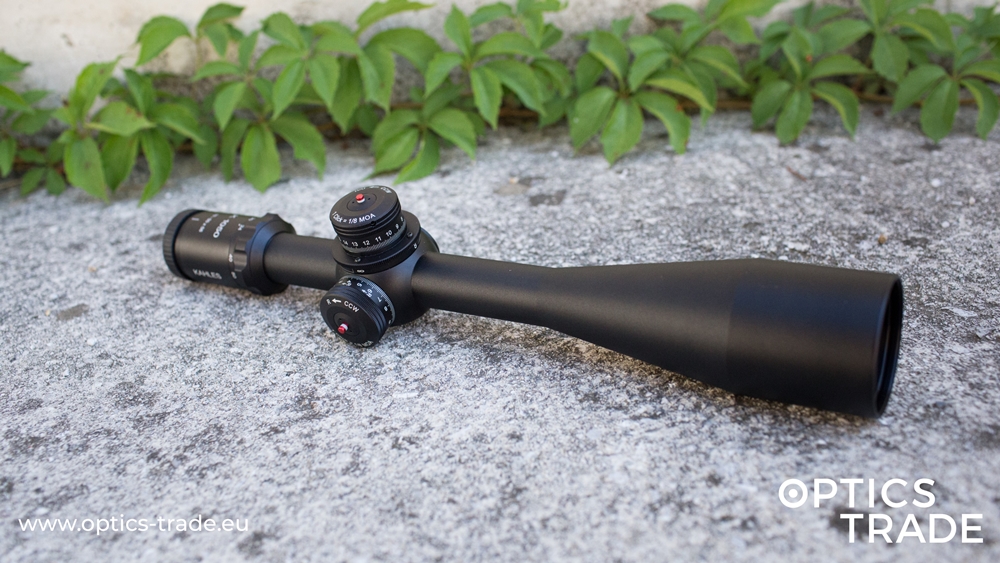
Kahles is the oldest riflescope manufacturer in the world with a tradition of more than 100 years. Even though they excel in the production of tactical riflescopes, they have an incredibly competitive product suitable for the F-class category as well – K1050 10-50×56. Even though this scope has been around for 10 years, it is still one of the best around.
It boasts impressive optical and mechanical quality – every movable part on the riflescope is made with great attention to detail. The turrets are of the tactical type. They feature fine 1/8 MOA clicks and a mechanical turn indicator. The clicks are crisp and audible. The parallax adjustment knob is at the base of the elevation turret which gets some time to get used to. If you are left-handed, you will be fond of it. The reticle is a fine crosshair, perfect for F-class shooting – there are no other reticles to select. One of the drawbacks of K1050 is its rather narrow field of view.
| PROS | CONS |
|---|---|
| Mechanical turn indicator | A very narrow field of view |
| Parallax adjustment solution (for both left- and right-handed shooters) | 55 MOA of internal elevation |
| Light (900 g; 31.74 oz.) |
More details on Kahles K1050 10-50×56 in our video review below
Kahles K1050 10-50×56
Available on our website.Great choice in the price class between 2000 and 3000 €
IOR Invictus 10-60×56
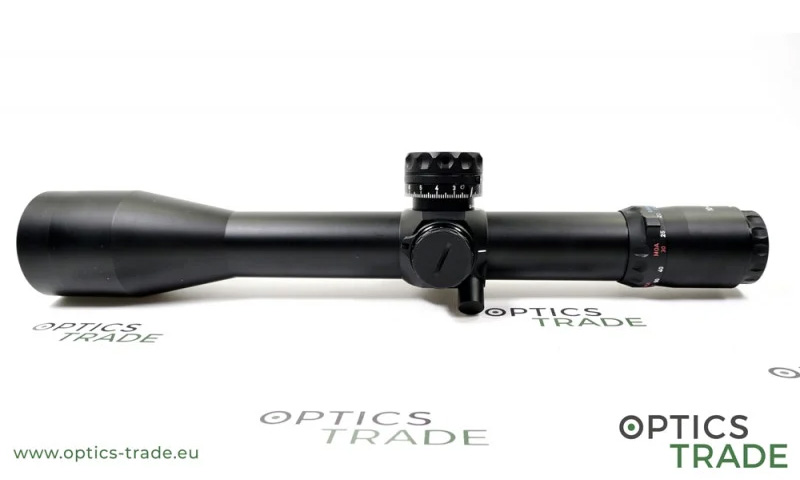
IOR has a tradition of manufacturing high-quality scopes for long-range shooting. Invictus was introduced after they discontinued their famous Terminator scope. The optics are, as befits a scope in the 2000-3000 € price range, impressive – IOR uses SCHOTT HD glass in Invictus scopes. The mechanics are excellent as well. IOR had been known for their barrel parallax adjustment mechanism on their long-range scopes before the introduction of Invictus which has a side parallax adjustment like IOR’s competitors.
It is big, chunky, and extremely heave, one of the longest and heaviest long-range target scopes around, and thus unsuitable for the Target F-class category. Even though it is made for target shooting, it resembles a tactical scope in many ways. The turrets are tactical – big and open-profile, but they can be used in F-class without problems since one click equals 1/8 MOA. The elevation turret has the zero stop function. Even though the reticle is very thin, it is of the Christmas tree type, which is not typical for a target scope – a fine crosshair would be better suited for F-class shooting.
| PROS | CONS |
|---|---|
| Great optically (SCHOTT HD glass) | Extremely heavy (1.45 kg; 51.15 oz.) and bulky |
| Great tracking mechanism for the price | Christmas tree reticle (not the best for F-class) |
| Affordable for what it offers |
IOR Invictus 10-60×56
Available on our website. Worldwide shipping.Great choice in the price class between 2000 and 3000 €
7.4 3000 €+
Our picks
March High Master Tactical 10-60×56
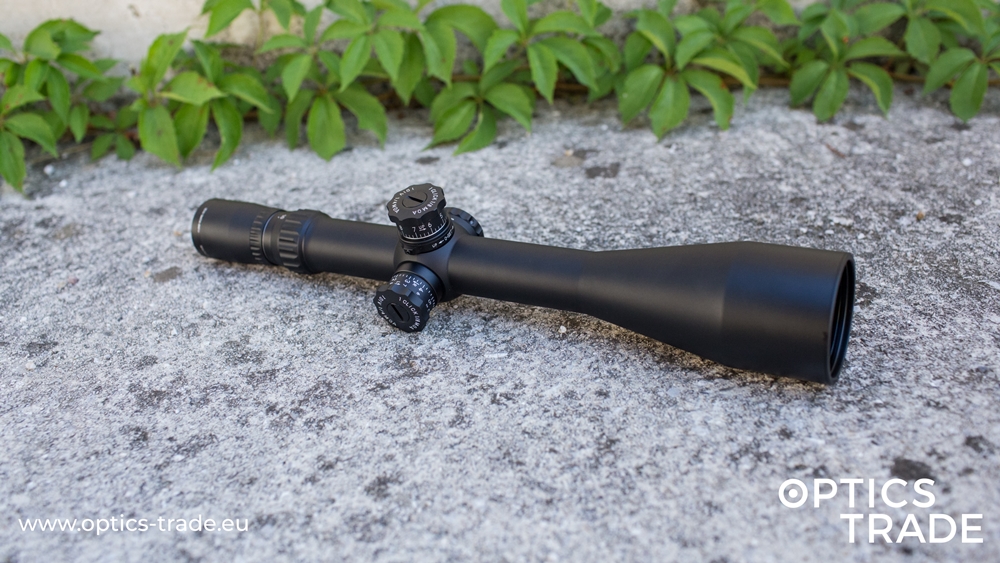
High Master Tactical 10-60×56 is the golden standard when it comes to F-class riflescopes. Many F-class shooters claim that it features the best image quality among all long-range target scopes – the lens elements are nearly pure fluorite, which is why chromatic aberration is reduced to a minimum.
These scopes are hand-built in low volumes; all the internal components are hand-lapped. Fit and finish is at the highest level possible as one expects from an optical device priced above 3000 €. Even though there is the word ‘Tactical’ in its name, the High Master 10-60×56 is a target scope in all aspects. There are several reticles to choose from, all extremely delicate and thin. Four of them are available with illumination. You can also have the reticle replaced if you grow fond of any others that are available after you purchase the riflescope. Elevation and windage turrets produce crisp, audible clicks; one moves the point of impact for 1/8 MOA. The elevation turret is equipped with a zero stop function and provides 60 MOA of internal elevation. The High Master is long but doesn’t weigh that much, regardless of its 34mm tube.
| PROS | CONS |
|---|---|
| Incredible optically | Expensive |
| A large choice of reticles | A non-mechanical turn indicator |
| Incredibly crisp, tactile turret clicks | |
| Generous eye box, even at higher magnifications | |
| Amazing field of view |
March High Master Tactical 10-60×56
Available on our website.A golden standard in F-class category of riflescopes
Sightron SVSS 10-50×60

Sightron is a famous name among F-class shooters predominantly for their affordable SIII riflescope series with great a price-to-performance ratio. With the SV series, they entered the premium market. The 10-50×60 model soon became a hit, even though it is one of the heaviest F-class scopes around, which limits its use to the Open category.
Currently, the second generation is available for purchase – it features ED glass which provides clear, sharp images with remarkably reduced chromatic aberration. Its parallax adjustment is probably the best on the market. Firstly, the 30 m-to-infinity parallax wheel has a huge travel range. Secondly, there is a sub-wheel for micro parallax adjustment on the tip of the parallax turret. For an F-class shooter that is a great asset as the image can be focused perfectly.
The reticle is a target dot; a fine crosshair with a dot in the middle. We think it would be great if Sightron added an option of a standard fine crosshair to the selection. The turrets are uncapped, of the tactical type, and feature fine 1/8 MOA clicks. They produce crisp clicks when rotated which is typical for Sightron scopes, and are equipped with a locking function. The turn indicator is simple, in the form of lines and numbers underneath the elevation turret. We like the fact that there is 10 MOA of travel in a single turret revolution because this makes it easier to calculate the total number of clicks dialled. The scope can be purchased with a zero stop.
| PROS | CONS |
|---|---|
| Great optically | Expensive |
| A brilliant parallax adjustment mechanism | Heavy (1.2 kg; 42.33 oz.) |
| 10 MOA of travel in a single turret revolution | A non-mechanical turn indicator |
More details on Sightron SVSS 10-50×60 in our video review below
Sightron SVSS 10-50×60
Available on our website. Worldwide shipping.A hit in the F-class category of riflescopes
7.5 Light F-class riflescopes, suitable for the Target category
Our picks
Nightforce Competition 15-55×52
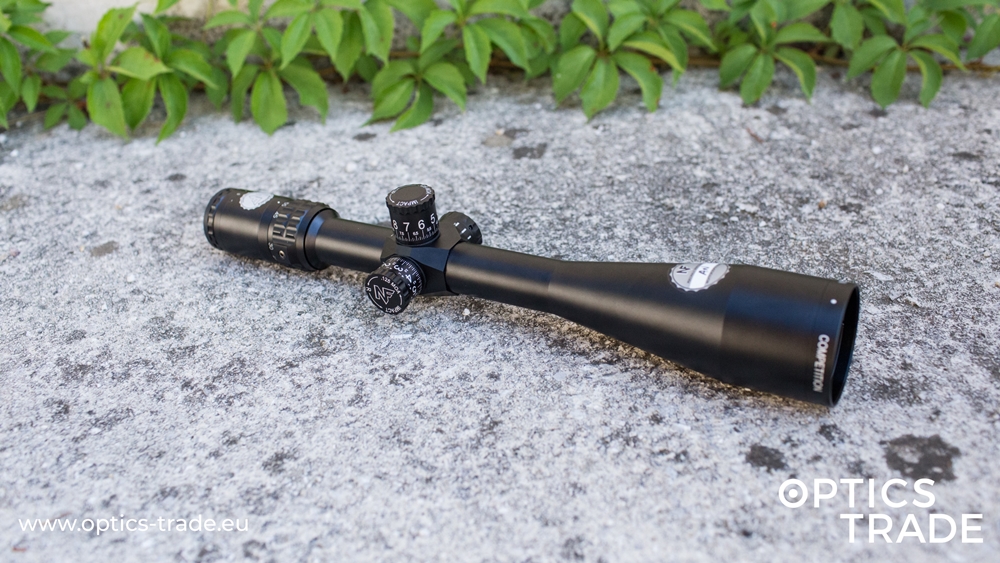
Nightforce is the only company that can compete with March scopes in the F-class category. The Competition 15-55×52 model boasts amazing optical quality, even at its maximum magnification. With a weight of only 790 grams, it is a perfect choice for the Target category of F-class shooting where there is a weight limit. Its lower weight can be attributed to the use of a 52mm objective lens.
There are four reticles at disposal, fine crosshair included. All are incredibly thin and provide minimal coverage of the target. The turrets are of the tactical type, uncapped and robust. The clicks are 1/8 MOA. We are not fond of the simple turn indicator in form of lines underneath the elevation turret; a mechanical turret would be much more suitable for a riflescope at this price point (around 3600 €). An internal elevation of 55 MOA is another drawback of this model, but you can easily shoot up to 1000 m if you get a 20 MOA base. The parallax is adjustable from 25 yards (23 meters) to infinity.
| PROS | CONS |
|---|---|
| Incredible optically | 55 MOA of internal elevation |
| Light (790 grams; 27,87 oz.) | A non-mechanical turn indicator |
| Numbers that mark each tenth click are large | Expensive |
| Generous eye box, even at higher magnifications |
Nightforce Competition 15-55×52
Available on our website.A great choice of a light target riflescope
March Target 10-60×52 SFP

Optically, this March model is not at the same level as the High Master Tactical 10-60×56, but the image clarity is great, nevertheless. Like all March Scopes, the Target 10-60×52 is hand-built with great precision – the mechanics are top-notch. Its main advantage over the High Master is that it weighs 200 grams less. It weighs even less than Vortex Golden Eagle HD and Nightforce Competition 15-55×52. This makes it an excellent choice for the F-TR category where shooters must be careful not to exceed the weight limit with their equipment.
There are plenty of reticles to choose from; all of them feature thin lines to provide minimal coverage of the target – the fine cross variants (with or without the dot in the center) are the most popular ones for F-class. The scope has 1/8 MOA turrets as befits a target scope; they produce crisp clicks. There is a zero stop on the elevation turret, and a turn indicator beneath it in form of lines with numbers next to them – we would prefer if the indicator was mechanical. The parallax can be set from 10 meters to infinity.
| PROS | CONS |
|---|---|
| Great optically | Expensive |
| Light (700 grams) | A non-mechanical turn indicator |
| Incredibly crisp, tactile turret clicks |
Vortex Golden Eagle HD 15-60×52
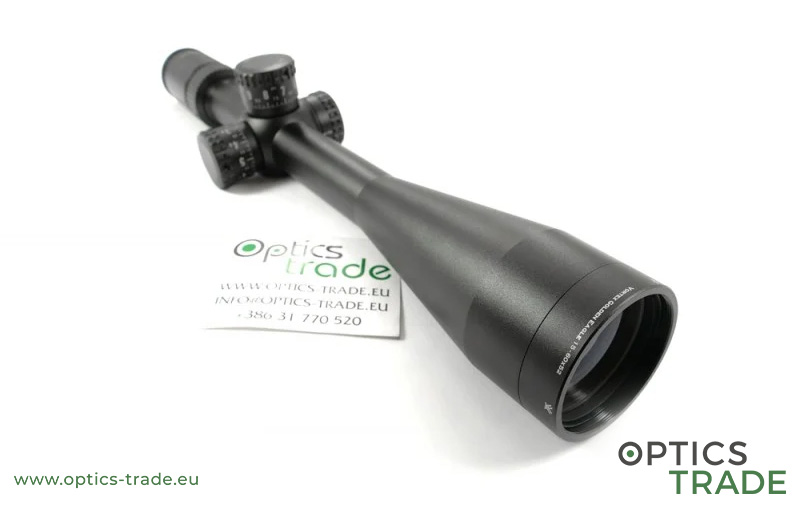
With a weight of 842 grams, Golden Eagle HD is designed for the F-class Target category. The price that it is available at makes it suitable for both beginners and more experienced users. The optics are incredibly decent for the price point, which is one of the main reasons why this scope is so popular among F-class shooters.
There are two reticles available, one of them is a fine crosshair. Even though the 1/8 MOA turrets produce crisp and audible clicks, they could be equipped with a zero stop and a better turn indicator. It has 55 MOA of elevation; getting a 20 MOA base is a must if you wish to shoot up to 1000 m. The parallax is adjustable from 20 yards (18 meters) to infinity. Golden Eagle HD is covered by the famous Vortex VIP warranty.
| PROS | CONS |
|---|---|
| Great Optical quality for the money | 55 MOA of internal elevation |
| Light (842 g, 29,7 oz.) | Lack of zero stop |
| Vortex VIP warranty | A non-mechanical turn indicator |
8. Conclusion
Having proper equipment greatly increases one’s chances to put on a great performance in an F-class competition. With the help of this guide, you should be able to choose the right F-class riflescope for your needs based on the set budget. New and improved F-class riflescopes are sure to be launched in the future; we will make sure that this guide remains up to date.
Do not hesitate to contact us at [email protected] or +386 31 770 520 if you have any additional questions.
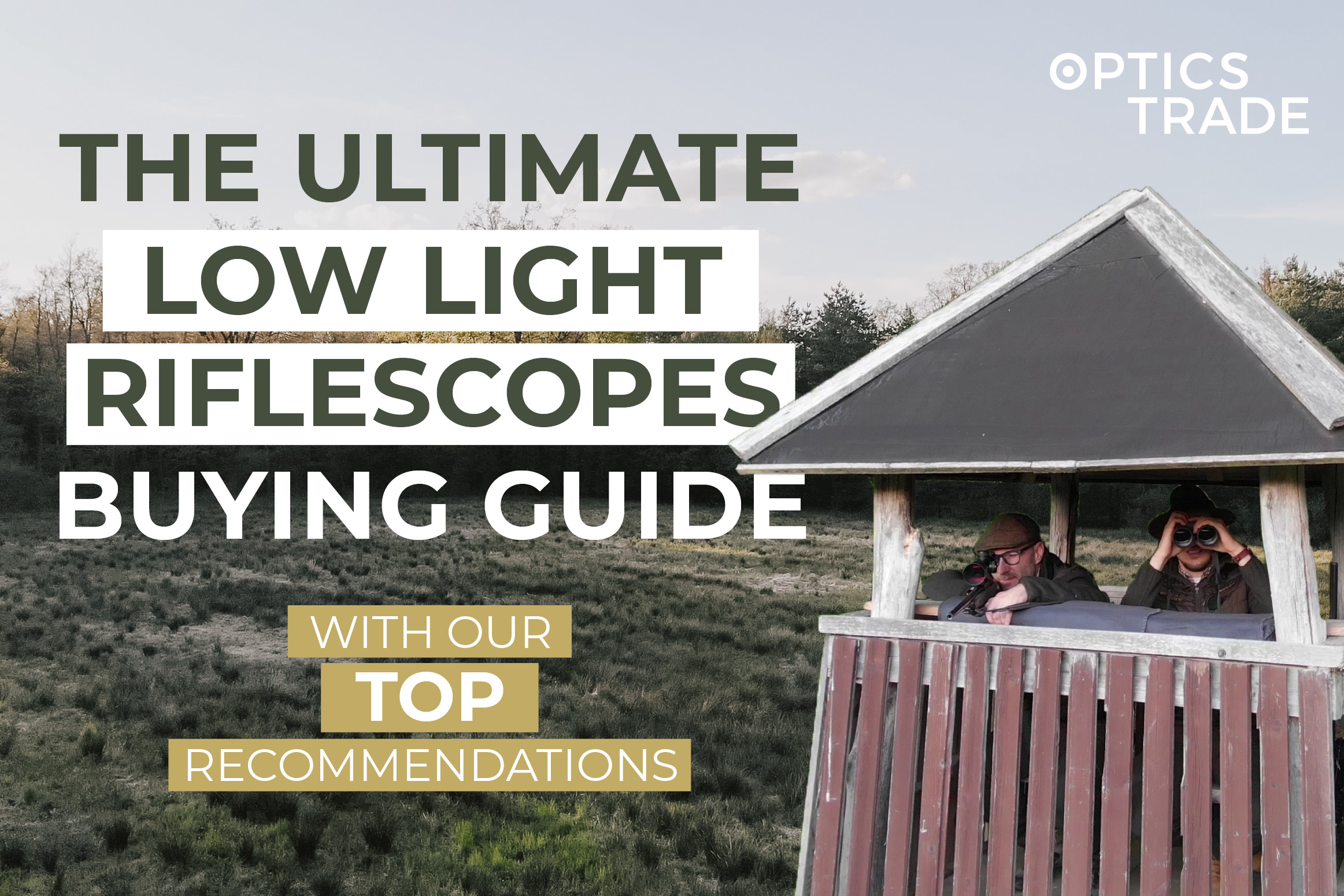
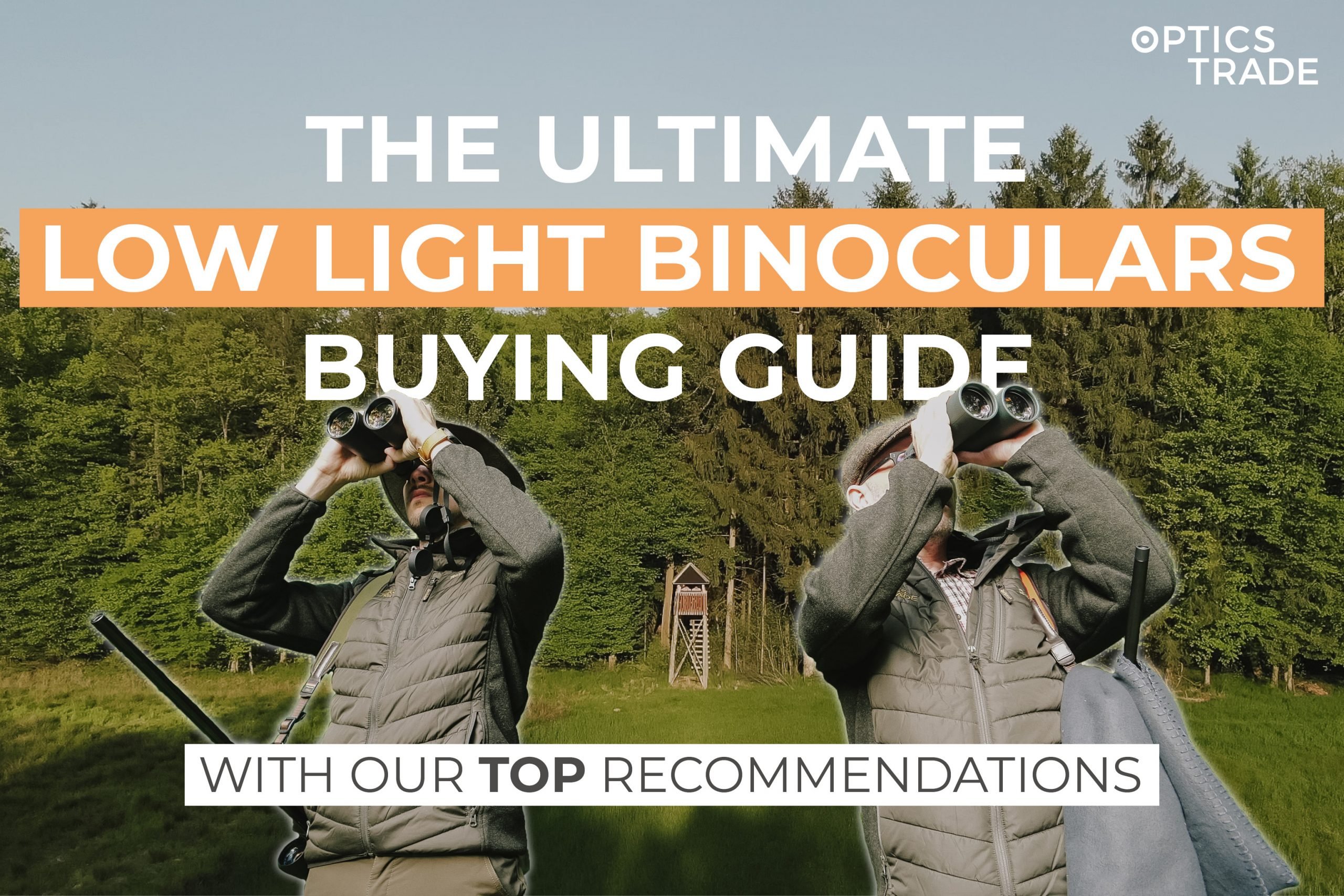



Thanks for sharing this blog. Keep posting